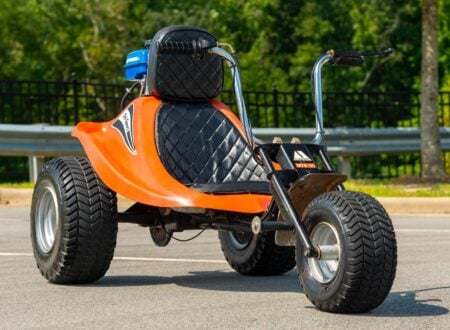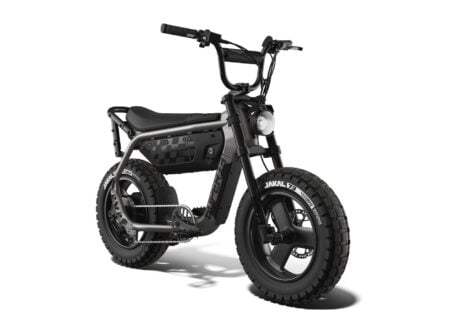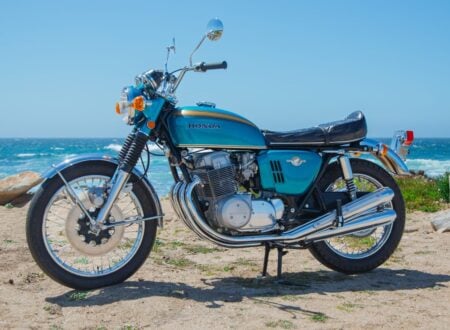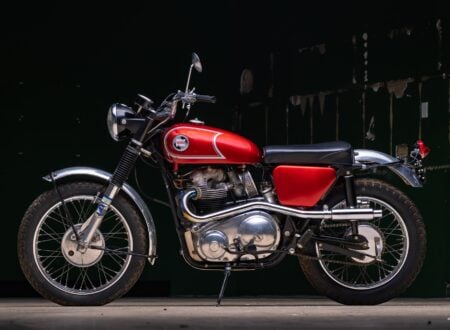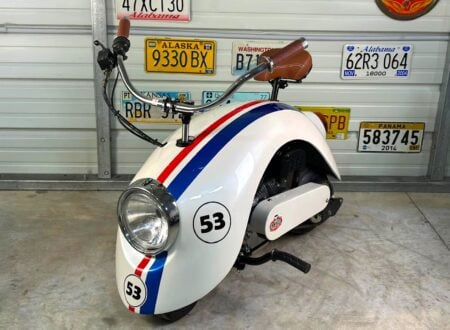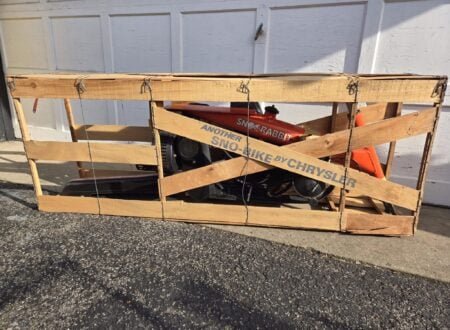This is a 39cc pocketbike, otherwise known as a MiniMoto, built by the well-known brand Blata, and finished to look like a miniature (and fully functional) Ducati 916 superbike.
Some of the best-known motorcycle racers of the modern age got their start as kids riding pocketbikes in sanctioned MiniMoto races, including Valentino Rossi, who is arguably the most famous of the lot.
Above Video: MiniMoto isn’t just for kids, adults race in the “Senior” division, enjoying a far more affordable form of two-wheeled racing compared to full-size superbikes.
MiniMoto: A History Speedrun
MiniMoto, also known as “pocketbike” racing, is a category of miniature motorcycle racing that picked up widespread popularity in the 1990s and early 2000s – particularly in Europe and Japan. Despite their small size, they’re typically 1/3rd to 1/4th the scale of full-sized superbikes, MiniMotos are fully functional racing machines, usually powered by two-stroke engines ranging from 39cc to 50cc in displacement.
MiniMoto bikes can reach speeds of 40 – 60 mph, and their light weight and low center of gravity make them good training platforms for younger riders. The earliest origins of MiniMoto racing can be traced to Japan in the 1960s and into the 1970s, when motorcycle enthusiasts began building fully-functional miniature versions of full-size racing motorcycles that were 100% rideable.
By the late 1980s, these pocketbikes began appearing in Europe, mainly in Italy, where they were embraced by the nation’s wildly enthusiastic karting and motorsport communities. Italian manufacturers like Polini, GRC, and Blata soon developed their own highly-refined pocketbike models with aluminum perimeter frames, hydraulic disc brakes, and high-performance two-stroke engines.
Italy quickly became the global epicenter of MiniMoto racing. National championships emerged in the 1990s, and the sport became a formal developmental pathway for young riders aspiring to move into 125cc and 250cc Grand Prix racing. This was much the same as the tried-and-tested karting to Formula 1 progression pathway.
Major MotoGP stars like Valentino Rossi, Loris Capirossi, and Nobuatsu Aoki began their careers on MiniMoto circuits. The emphasis was on tight, technical kart tracks where rider skill could shine over outright horsepower – mirroring the qualities needed in higher levels of motorcycle racing.
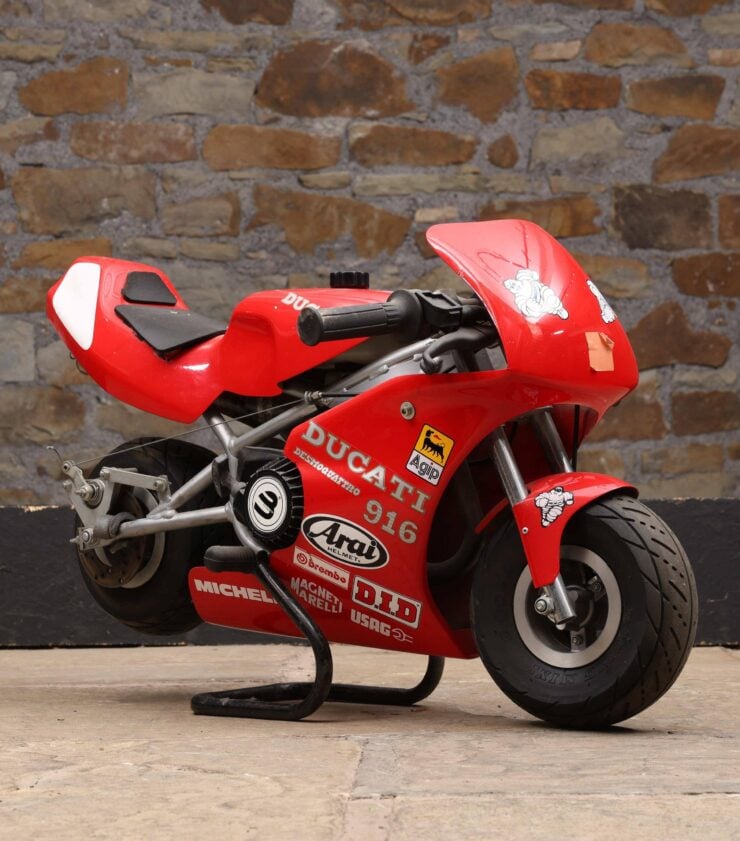

In the United States, the MiniMoto scene arrived later and was more fragmented. It gained traction in the early 2000s, often as part of larger karting or amateur motorsport events. American riders tended to favor slightly larger models, sometimes called “Super Pocketbikes,” which bridged the gap between MiniMotos and pit bikes.
The rise of Chinese manufacturers in the early 2000s flooded the market with inexpensive pocketbikes, which were often poorly built and prone to failure. They were typically targeted at casual riders rather than racers who knew better.
This briefly diluted the sport’s image, but on the upside it also made the bikes more accessible. Around the same time, governing bodies in Europe introduced stricter regulations to maintain the quality and competitiveness of sanctioned racing.
Today, MiniMoto racing remains a legitimate grassroots motorsport, especially in Italy, Spain, and Japan. It continues to serve as a foundational step in the careers of many professional motorcycle racers and is supported by academies, training schools, and manufacturer-backed programs.
The “Ducati 916” Blata Pocketbike Shown Here
The pocketbike you see here is a Blata model that’s been finished to look like a miniature Ducati 916, one of the most influential superbikes of the 1990s.
This bike is powered by a 39cc single-cylinder, air-cooled two-stroke motor powering the rear wheel via a standard chain and sprocket arrangement. It has a tubular steel frame, front and rear disc brakes, and a pull-starter on the lefthand side.
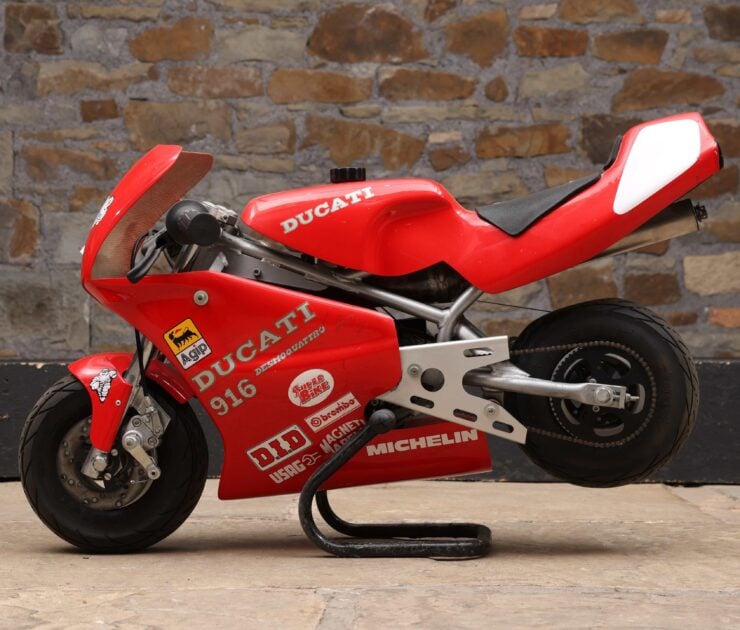

It has full fairings with Ducati decals in place, as well as period-correct sponsorship stickers from many other companies, like Michelin, Arai, Brembo, Agip, and others. The bike doesn’t have suspension, relying on the tire sidewalls for limited cushioning.
It’s now due to roll across the auction block with Bonhams on the 16th of June with a price guide of $530 to $800 USD. If you’d like to read more about it or register to bid you can visit the listing here.
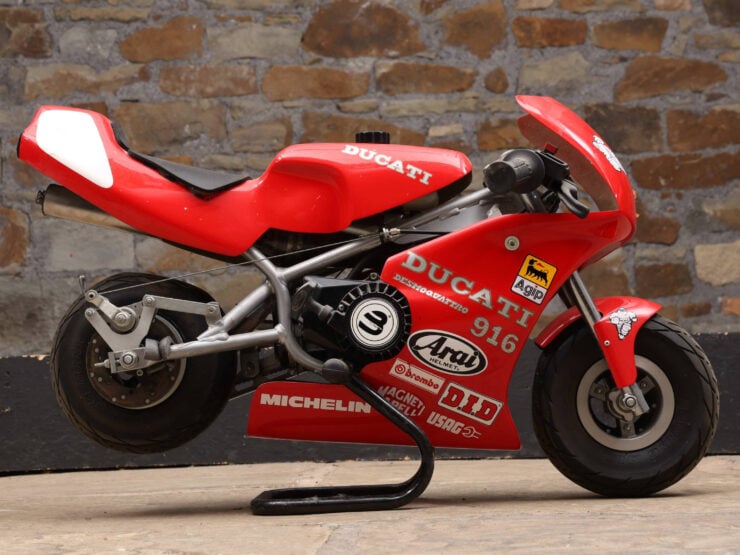
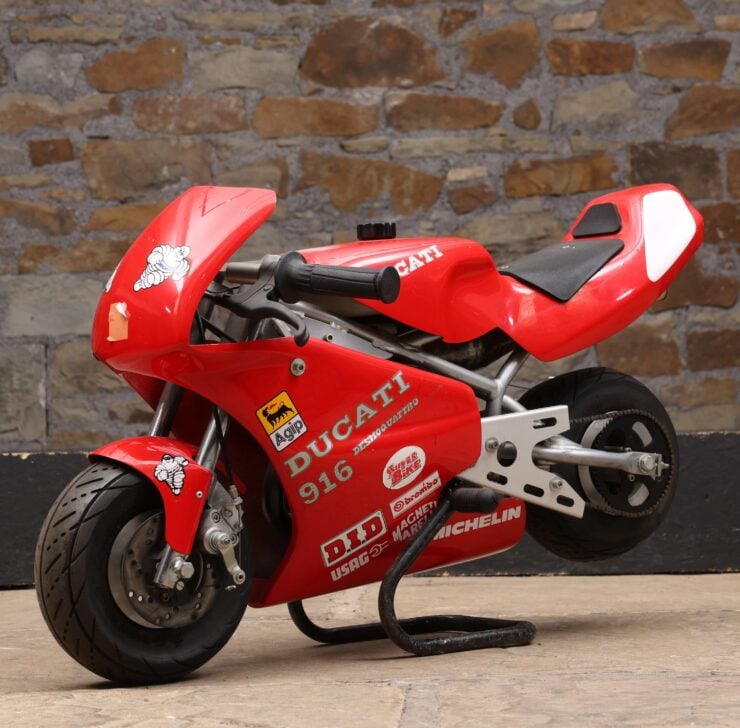
Images courtesy of Bonhams



